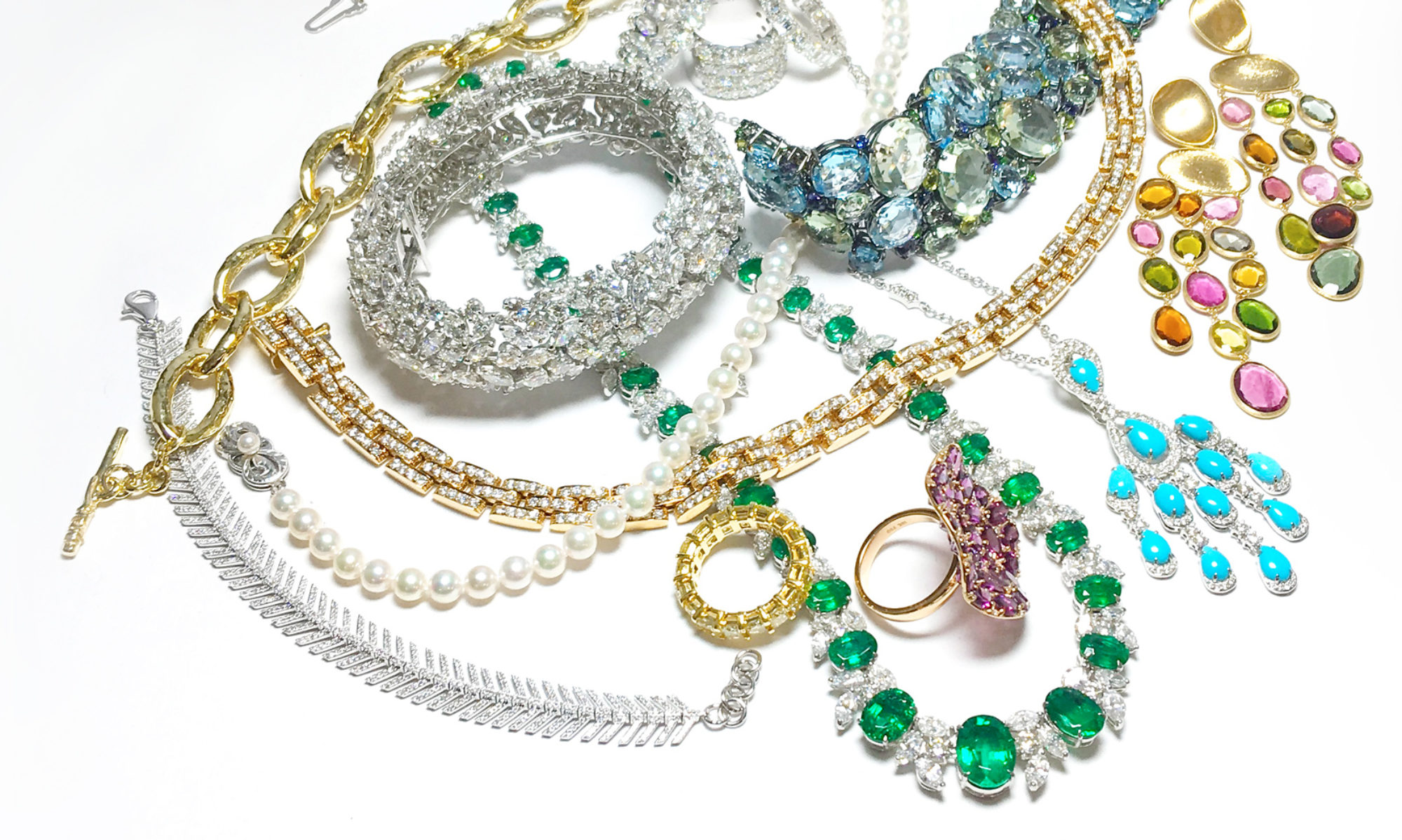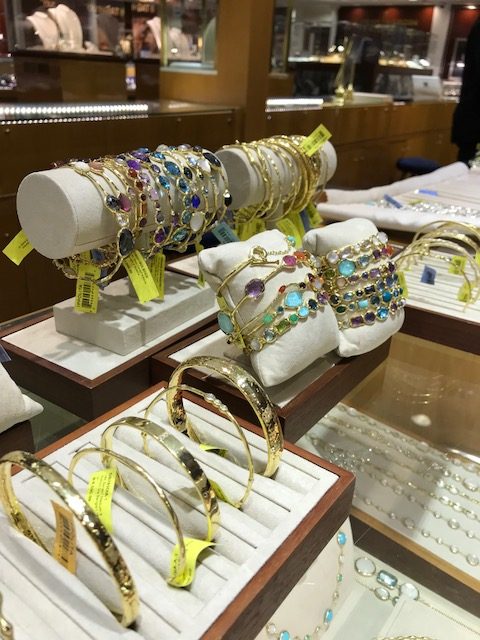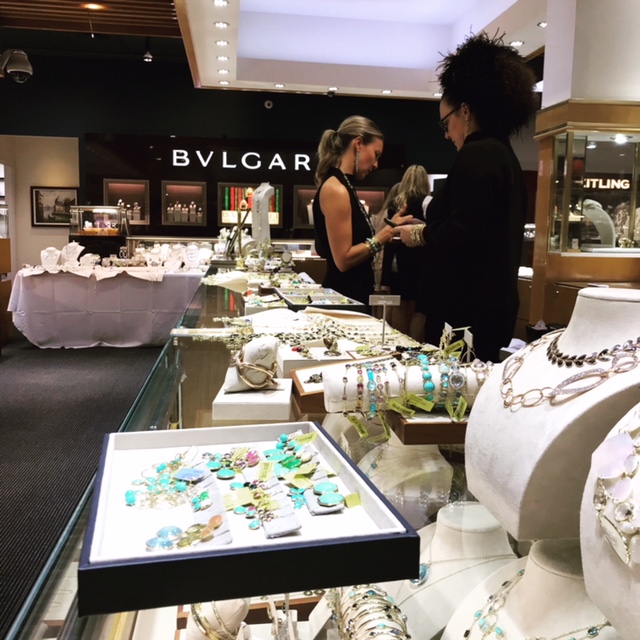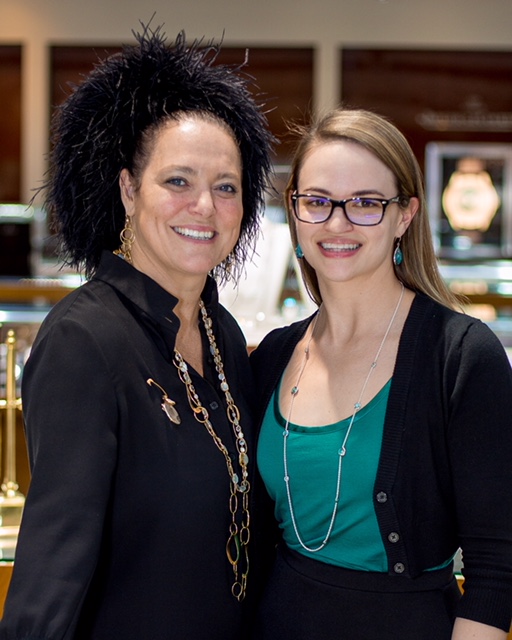Recently, British designer Stephen Webster paid a visit to Zadok Jewelers. As the public-facing creative force behind his eponymous jewelry brand, he’s been photographed all over and with all manner of celebrities, so I recognized him immediately.
What I didn’t see coming, because you never know with highly successful people, was the friendly and relaxed energy he exuded as soon as he walked through the door despite having landed in Houston at 1 a.m. the night before. He brought his No Regrets Lounge with him, a curated space involving a signature margarita and a neon sign (more on that later) that Zadok customers got to enjoy at a party that evening.
He was kind enough to agree to sit down with me for a quick chat, much like the one I had with with Ippolita Rostagno last year. What I had planned on being a five minute interview turned into 16 minutes of recording. His answers were thoughtful and detailed, and always came with a back story. I found the designer to be a bench jeweler at heart with a fierce creative streak and very solid sense of self after decades in the jewelry industry.
Jewels Abound: You’ve been in the jewelry business a long time. How do you manage ensuring your jewelry is commercially successful without compromising your creativity?
Stephen Webster: Well, I think you set a balance. I think for me, I kind of tend to be quite headstrong because there’s lots of jewelry out there, and lots of jewelry that’s commercially successful. And I think that I realized probably quite a few years ago that my place was a niche, so it was never going to be that I had a commercial line that was everybody’s bread and butter. And to be honest, that wouldn’t interest me, to be that jeweler. I try to stick to that and I think it kind of shows in the work, that there’s not anything where you say, oh, that’s your commercial line. I have things that are commercially more successful than others, but what I like more than anything is when something feels a bit like a creative challenge, and that works [commercially]. Then you’re like, wow, that’s the perfect combination. And it doesn’t always [work].

So I’m not that good at thinking, right, now we need to pay the bills, so therefore we’re going to design like this, because I think that I’d drift. It’s quite important that you find where your niche is and I wouldn’t be happy – I’ve been a jeweler for 44 years – if I felt like I was just doing something that was purely looking at the bottom line.
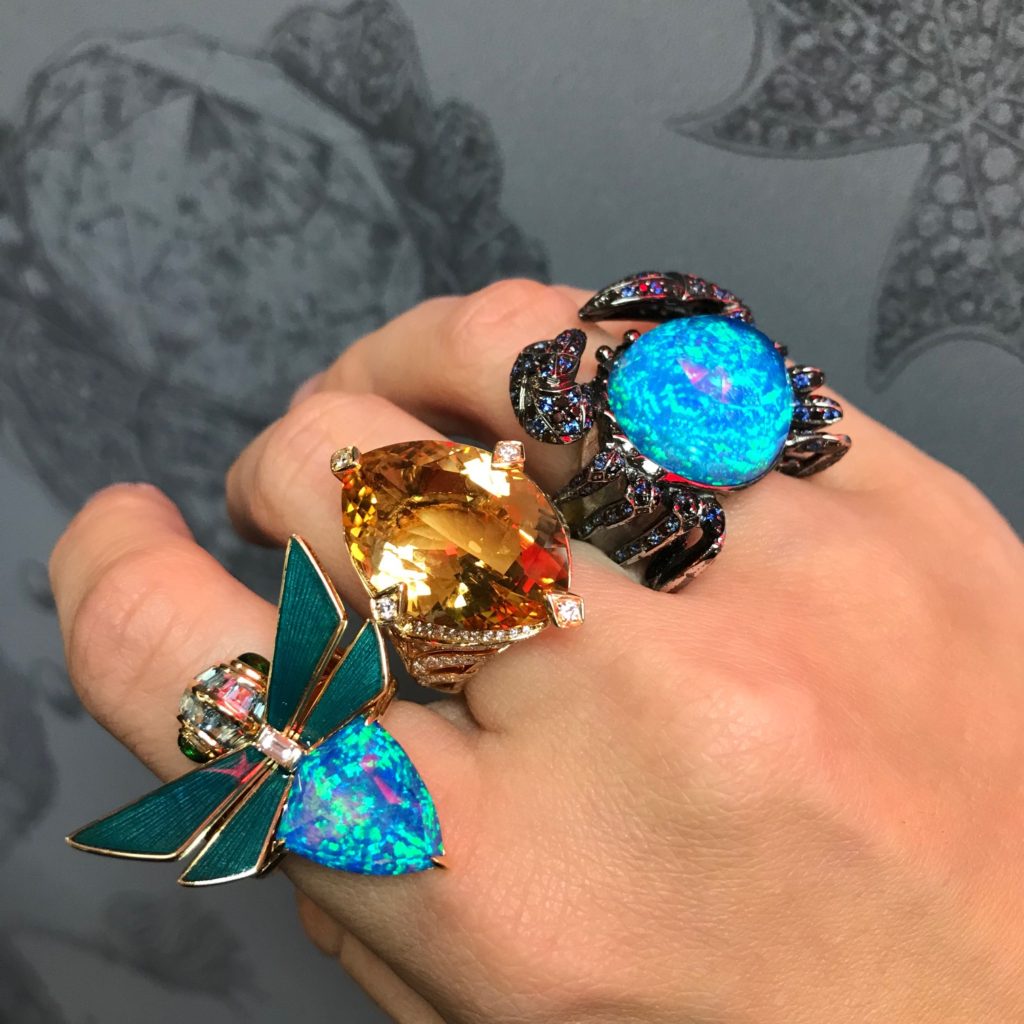
JA: You started up in 1989 and currently have more than 100 points of sale around the world. When did you start having events with fun elements like the No Regrets Lounge, and how has it changed your business?
SW: It really kind of took off for me about the mid 90s. It took off in America. I used to live in Santa Barbara, CA designing and making jewelry for a jeweler there. I developed my style there because of my exposure through my partner, who you’d call sort of a rock adventurer. He used to go to far-flung places like Afghanistan and Pakistan, Brazil and Africa, and come back with these really juicy rocks that weren’t the normal palette of what jewelry was at that time. It was quite tight. Jewelry predominantly would have been emeralds, sapphires, rubies, diamonds, pearls, opals, etc. But I very early on was exposed to tanzanites and tourmalines and tsavorites and aquamarines, things that were just not something that you felt you had to treat in the same reference.
I felt like I had more fun with it. They looked like more fun, and they were more fun. So that started to become my style. I thought, well, I can make a cocktail ring, and that sounds sort of fun. Or I can make an engagement ring, that doesn’t sound like much fun. I’ll go with the cocktail ring. If I’ve got a philosophy of my design, it’s a bit like that. I try to bring some enjoyment to what I do. And it really does work. People look at it and they feel that I enjoy designing it and making it, and they enjoy wearing it.
You asked about the No Regrets Lounge. I opened a store on Rodeo Drive about 12 years ago. We had an upstairs space that was offices, and I thought, I don’t really want offices. I thought I’d make this place where I can show things that I like. So it wasn’t about what I made, it was never showing jewelry. I would show art, photography, I’d bring chefs in, DJ’s, classical musicians, we had everything upstairs. My clients just loved that they didn’t know what was next.
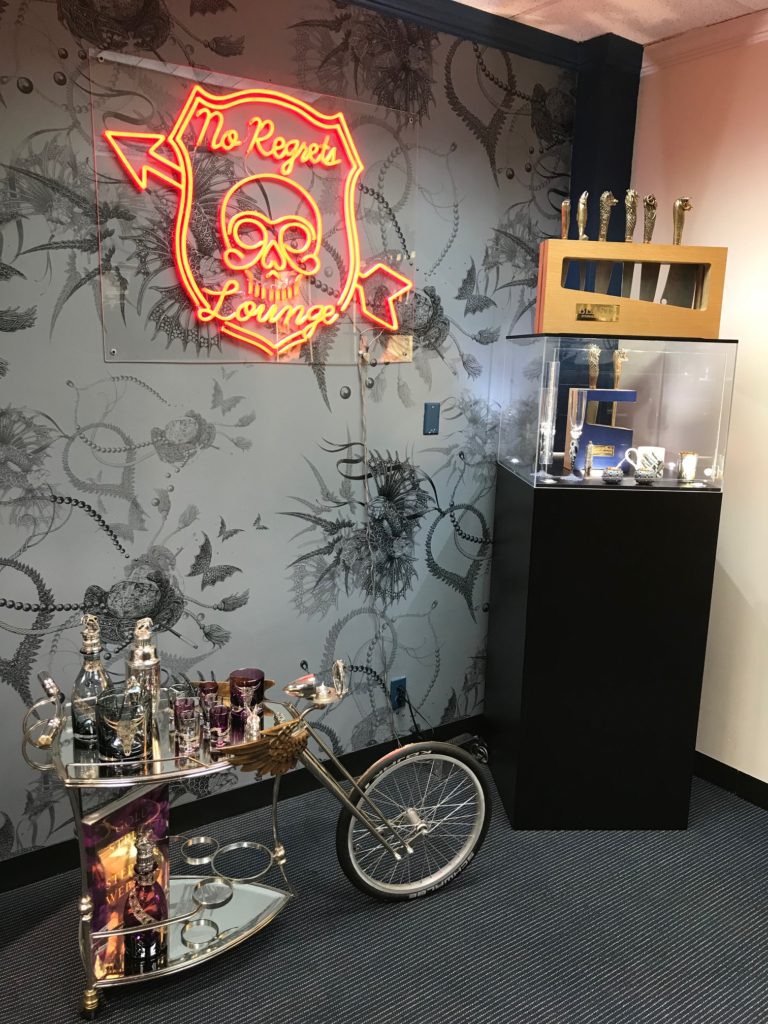
I can’t remember why I called it this, but I called it the No Regrets Lounge, and that became this place. Everybody knew it as the No Regrets Lounge. Before we’d start whatever we were doing, I’d say, “Welcome to the No Regrets Lounge!” It was kind of the only non-manicured space on Rodeo Drive. And it was meant to be that way, and it looked like a place where you just went and had fun, and we had lots of fun there.
When I closed the store [on Rodeo Drive], the bit I missed more than anything was the No Regrets Lounge. I thought I could take it and travel with it. So I took it to Art Basel last year. It was my place in Art Basel, and people loved it; they thought that they wanted to live there. That’s the idea of the No Regrets Lounge. It’s quite fluid. There are a couple of things you need, like the neon that says “No Regrets Lounge” in case you get lost, but the rest is really about an environment where I can best showcase what I do. That can be the men’s or women’s jewelry, or my homeware, which now belongs perfectly because it’s about things you might find in a lounge. Tequila toolkits, vodka toolkits, chef’s knives, it’s all for the home.
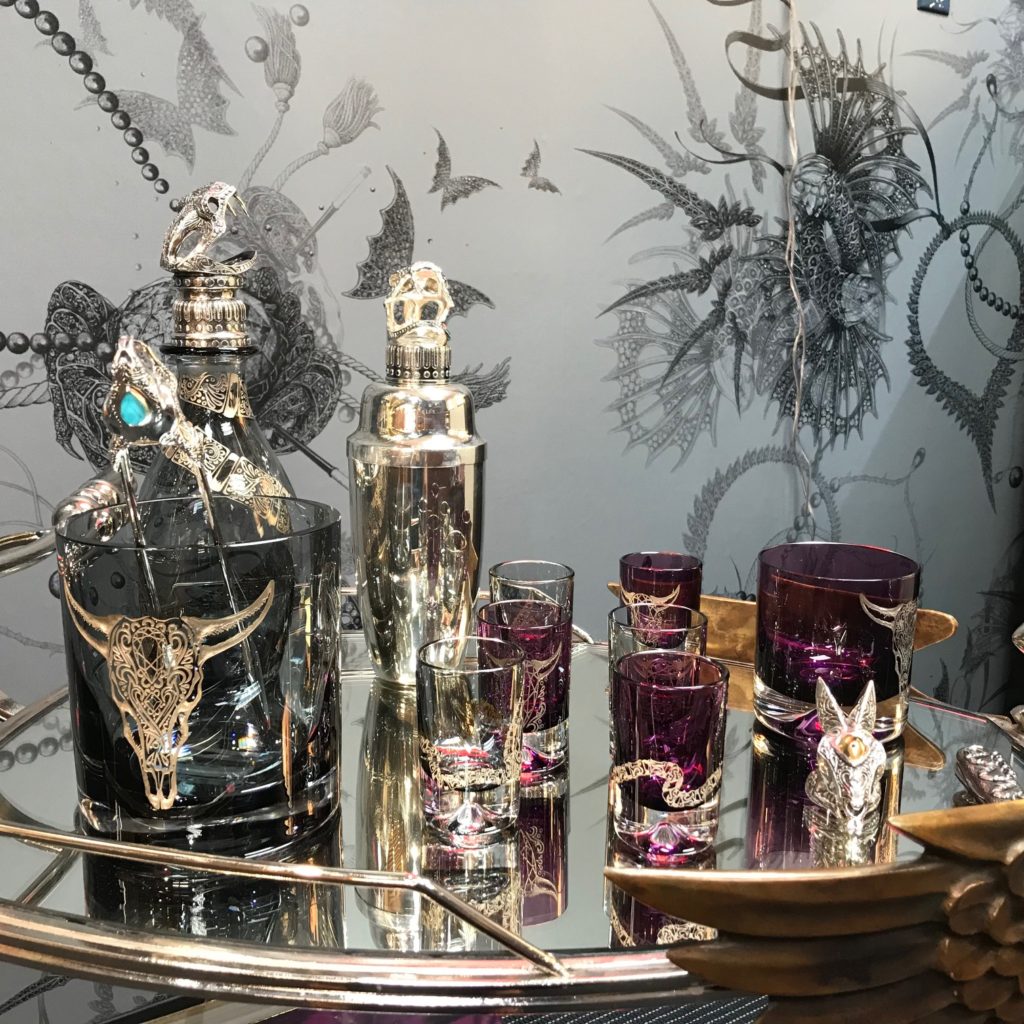
As you are well aware, because there’s one in Zadok right now, people really like it. The staff like it; it doesn’t feel corporate, like this is my branded corner. It feels like my branded corner in a way that’s not branded. So it’s kind of subliminal.
JA: You’ve gone public with this before, so I hope you don’t mind me asking. A few years ago, you shared the story of your decade-long battle with anorexia. What inspired you to go public with that story?
SW: I wrote a book called “Goldstruck” that was autobiographical without being an autobiography. I knew that I had enough in me that was kind of entertaining through my life being a jeweler. And I’ve made it that way. It’s quite obvious that surrounds what I do. But at the same time, I had a period that was really not so much fun [laughs]. You’ve kind of got to battle on through.
Part of the reason I ended up having mental health problems was because of jewelry. I found myself in a place where I was very conscientious of what I did as a jeweler. I was living in Canada, and I had made myself without realizing really unhappy being in this place where, to be honest, I probably should never have been. But I was there, I was employed, I took that very seriously. I had a team that I had employed around me, and I think it just went that way.
It was a chronic kind of homesickness – I was quite young, I was in my early 20’s – and without realizing it you kind of feel a little bit out of control. But you can control yourself. And that’s often what sparks something like an eating disorder, this idea of control. I didn’t know anything about it. It was very unusual, to be a guy with an eating disorder. [Laughs] I didn’t know any others, that’s for sure. It was also quite an early time even for the term. I think we’re much more aware of these things now.
Fast forward, where I was sort of more like, recovered, if you like? My eldest daughter who now works for me, I could see the same thing happening to her. It was a completely different set of circumstances; she was being bullied. She was in her mid teens and we didn’t know. We recognized that she was not eating, and it happened so quickly. But because I was very unusual in the fact that I was a dad who had experience myself, we were able to be part of her much quicker recovery. I’d say she’s an extremely healthy woman now, in her late 20’s. Very aware of the fact that she had an eating disorder. You tend to be able to spot it in people when some other people might not be able to. You’re kind of aware of what’s going on for people.
I feel [I went public] for these reasons. It’s not embarrassing. It’s like you said, well, you’ve been through it. And people talk much more about mental health now than they ever have. It’s such a good thing, I know in England and in America. So it’s not like I start a conversation with it. But if it’s appropriate, like you’ve asked me the question, I’m happy to talk about it. And it’s part of my journey. It was too long to ignore [laughs].

JA: You have two children, correct? I’m expecting my first child. Any parenting tips?
SW: Well, congratulations! I’m so lucky with my two daughters with how they are. We are such a close family. Now, I could say that certainly when the eldest one was growing up, she was four and a half when I got divorced, I was trying to build a business, I was traveling like crazy. You could have almost said, you were a terrible parent. But you know what? I wasn’t a terrible parent. You can find yourself in a situation, especially when you go through a divorce, where you suddenly got very limited access to your children, especially as a father. It’s not always like this, but just for me it was.
I thought, right, okay, I’m not happy about this. That wasn’t part of what happened between her mother and I. So I became a volunteer art teacher at her school. So for two years, I was their art teacher. We talk about it now, how that was just so crazy. Like, “My dad’s coming to teach us art!” for two years. And I used to turn up on my Harley Davidson so they were all about scared of me. I didn’t have any trouble from any of them. It’s not about a plan, but it kind of bonds you.
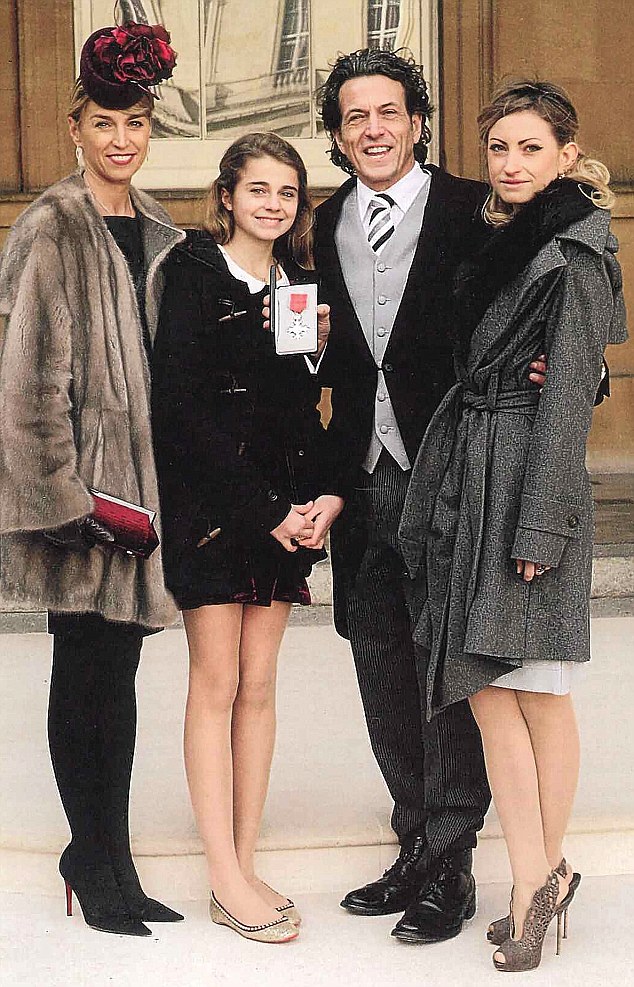
And she works for me now, which is amazing. Cause she went and did her own thing, went to university and lived in Berlin for four years and was making films. And I said to her, look, what you’re doing I think is what I think I need. She was making film content for brands. I said, do you want to come and work with me? She said, “Oh dad, I love you but I don’t know. I mean, I love what I do.”
So she had a trial period for a month. And then she said after two weeks, this is what I’ve got to do. I love what you’ve achieved. Everyone who works for me, some have been with me for 18 years of and they grow with this business. It’s not just me; I’m a member of the team and now she’s a member of the team. So I go from seeing her somewhat, you could say, absently, and now I see her every day, which is amazing. So that’s cool.
Her sister is 20, and she’s moved to Shanghai for a year. She studies Mandarin. She’s really, really good at language. But we’re a really tight family and it’s so lovely because they still want to hang out with their dad. [Laughs] So you say, well, was I a good dad or not? I don’t know, we’re certainly a close family. I haven’t got too much advice about that other than, you know, in the end if you give your family as they grow up room to breathe, and trust them…
You know, I never tried to put anything on either of them. Jewelry is a perfect example of these sort of family businesses, where generations come in. Sometimes they love it, they really do, and then they take it to the next level. And sometimes maybe they don’t, and they felt maybe a bit spiteful or something. I wouldn’t ever have wanted that. I suppose I thought – cause she only started working for me a year and a half ago – that would never happen. It was actually somebody else, an Italian friend of mind said, why don’t you bring in your daughter? She’s amazing at doing this stuff! And I thought wow, I don’t know.
But anyway, that’s it. You’ll do it your way.
This interview has been edited for length and clarity.
